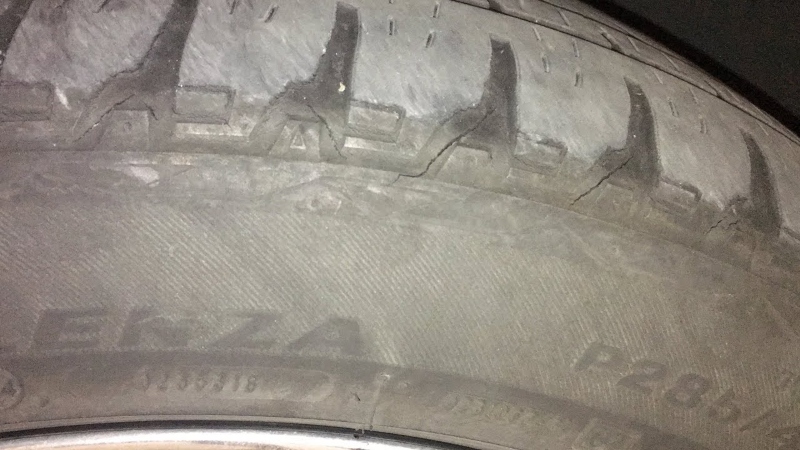Thanks for your support! If you make a purchase using our links in this article, we may make a commission. And, as an Amazon Associate, I earn from qualifying purchases. See the full disclosure here.
RV tires with dry rot can cause many safety issues, including a possible tire blowout while on the road.
Identifying the problem before you take off on a trip is critical. RV tire dry rot will cause the tire to blow at the weakest point that can no longer contain the air pressure within the tire.
At the very least, dry rot weakens the rubber and can result in the tire leaking air. It will be difficult to maintain the correct air pressure, which is critical when the tires have the weight of a loaded RV on them.
If you notice dry rot in your RV tires, the best solution is to replace them immediately.
How to Identify Dry Rot in RV Tires
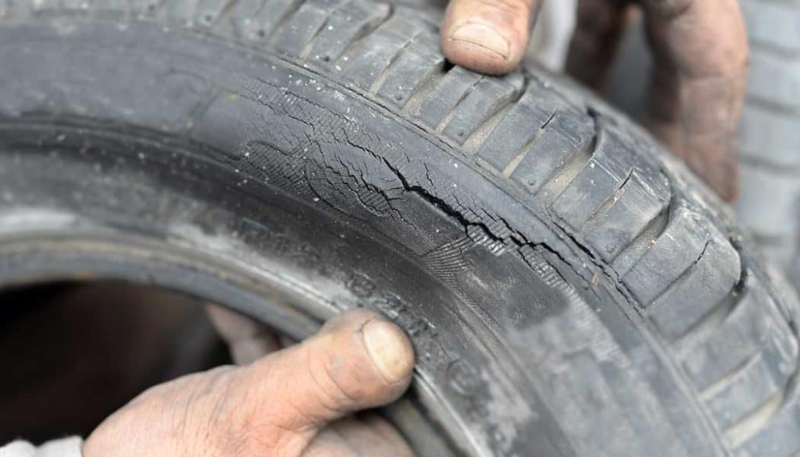
When you regularly monitor your RV tires, it won’t be difficult to see that dry rot is happening. The tread will detach, the tires will have cracks, and you will see bubbling in the sidewall.
Take note that dry rot occurs not only in the tire’s sidewall but also on the tire tread’s surface, particularly in the valleys between the raised treads of the tire. Dry rot will, however, likely be noticed first in the sidewall.
You might also see small cracks in the surface of the rubber, which will become longer and extend deeper into the tread.
Here are some great tips on how to avoid your RV tires from dry rotting.
6 Tips to Prevent Your RV Tires from Dry Rot
1. UV Exposure Quickens the Dry Rotting Process
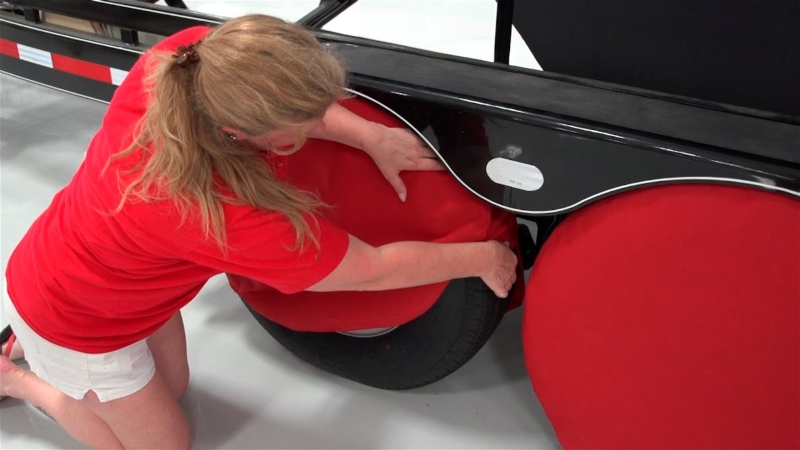
UV exposure will quicken the dry rotting process in your RV tires. UV sun radiation is slowly microwaving your tires and slowly drying the rubber.
UV radiation speeds up the chemical process rubber goes through as it breaks down. Over the months and years, tires are slowly drying out, losing their pliability. Covering your tires is a great solution to slowing down that degradation process.
When RV tires are overexposed to sunlight and UV rays, they can bubble and crack, exposing their internal layers and quickening the decay of the tire’s surface. Air bubbles (or blistering), appearing on the tire’s surface indicates that dry rot has begun.
As the process continues, tears on the surface can happen or pieces of tire will separate from the inner belt. At this point, a blowout is imminent should you drive on the tires.
2. Consistent Temperatures Prevent RV Tires from Dry Rotting
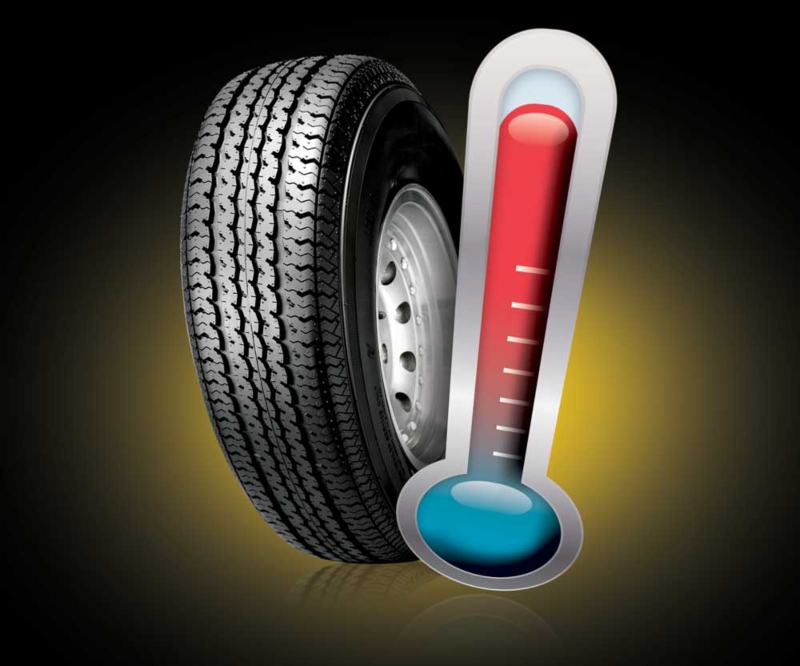
Fluctuations in temperature can cause your tires to degrade quicker. The same is true for excessive heat or cold.
To solve this problem, it makes sense to park your RV where daily temperatures are mild and do not fluctuate widely. While seasonal conditions are ok, there can be a great difference between air temperature and the sun’s direct temperature on the tires.
Also, do not park your RV near an ozone source such as sump pumps, welding machines, electric motors, and furnaces. The ozone this equipment produces speeds up rubber’s breaking down process.
Weather also plays a part in fostering dry rot in your RV tires. Rainwater can damage a tire when it seeps through a tire’s exterior.
A tire can also be damaged from snowfall. As the moisture builds up in the tread or cracks, the low temperatures freeze and expand, causing the tire’s walls to further crack.
Strong winds can lead to dry rot by blowing abrasive materials that slightly scrape the tire’s surface. Through long exposure, it leads to cracks and holes on the sides of the tire.
Of course, extremely hot weather conditions can damage tires. If the RV stays in a dry environment for long periods of time, tires will wear out quicker because of the lack of humidity in the air.
3. Proper Inflation Avoids Dry Rot on RV Tires
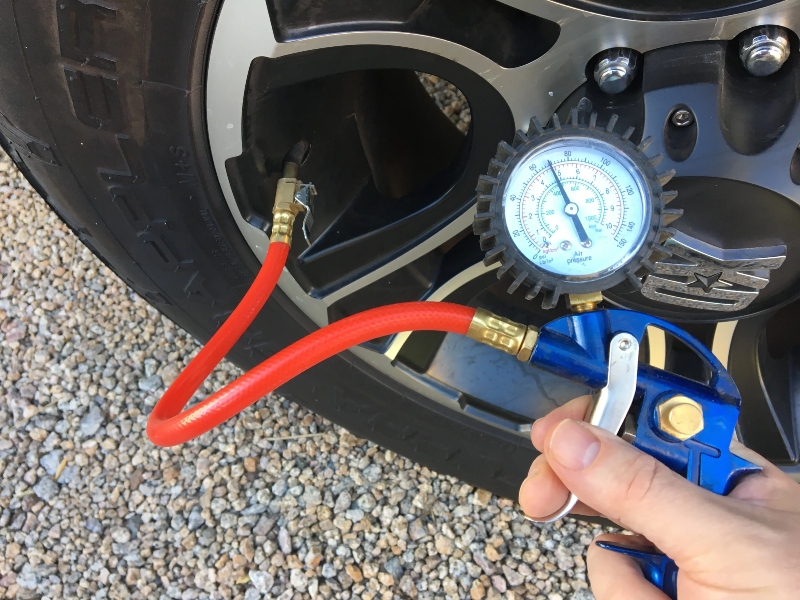
Proper tire inflation can help prevent dry rot in your tires and keep them in better shape for the long haul.
When they are at their best, inflated at the ideal PSI, tires resist dry rot, decay, puncture, and other types of damage.
After sitting still for a period of time, RV tires can get flat spots which will also allow contaminants the opportunity to damage your tires.
Tires that have been immobile for long periods of time can also start bulging under the weight of the RV, which causes unbalanced stress in the tires’ rubber, hastening the onset of dry rot. Air can leak out and cause underinflation making the RV tires more likely to blow out.
Manually check your tire pressure regularly with an affordable tire pressure gauge.
4. Extended Storage Causes RV Tires to Dry Rot
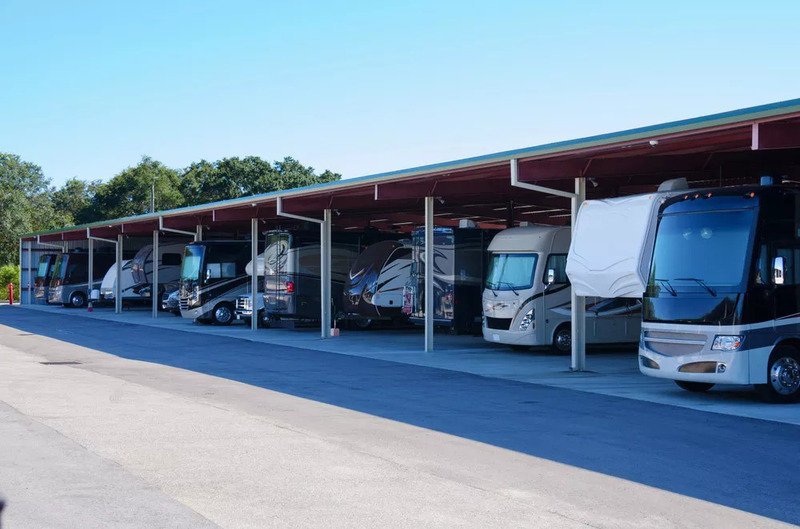
Keeping your RV in storage beyond the off-season will shorten the life of your tires and give you problems with dry rot.
Even a quick weekend trip will help get your tires the use they need to keep them “healthy.” Tires are made to move, not sit still. Get out and explore with that RV, even if it’s a night out at a nearby host location.
If you store your RV outside in the direct sunlight, UV radiation can majorly contribute to dry rot in your RV tires. Even tires on an RV stored under an outdoor covered storage facility space will be susceptible to the sun.
Using RV tire covers for motorhomes and travel trailers is a great way to keep them from long-term exposure to sunlight. You can find RV tire covers for tandem axle travel trailers or single axle towable for amazing prices both online and at your local camping store. You can also DIY covers out of awning material, canvas, or any weather-resistant material.
5. Avoid Excessive Weight on Your RV Tires
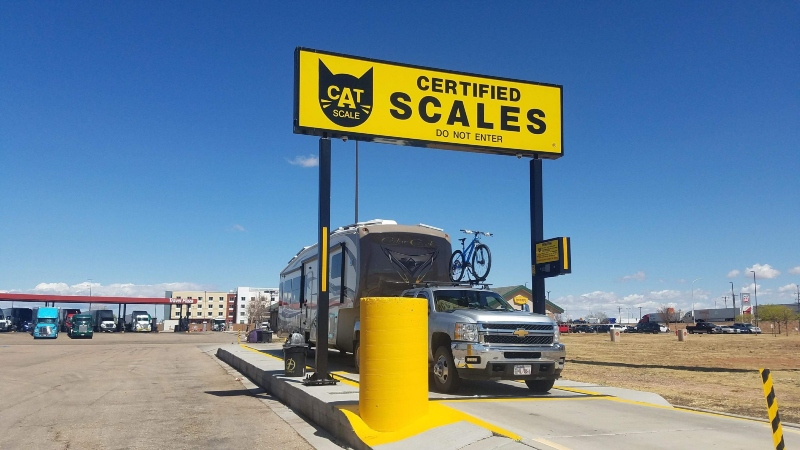
Excess weight on your RV tires weakens the integrity of the tires and the pressure can create stress cracks.
If you overload your RV regularly, you are not only creating a driving hazard but a tire hazard as well. This will wear out your RV tires faster, particularly on the sidewalls, where dry rot will begin to take hold of the tires.
It’s important to know that sidewalls are more brittle than the treads and cannot take as much downward pressure which occurs with low tire inflation and excess weight.
For some great info about lowering the weight of your RV check out our article called 20 Best Ways to Reduce RV Weight.
6. Keep Your RV Tires Clean to Prevent Dry Rot
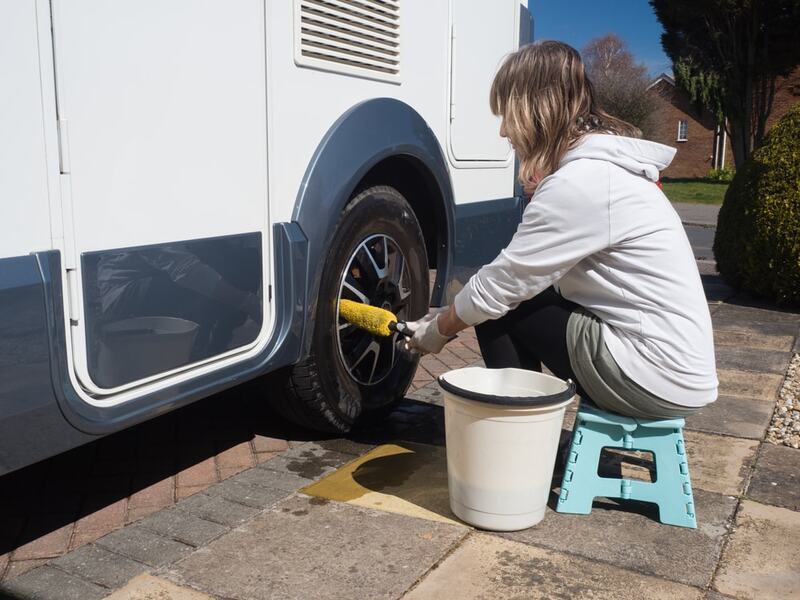
Keeping your RV tires clean will go far in preventing dry rot. Salt and other corrosive chemicals can seep through the tire’s surface and damage rubber walls.
Washing your RV tires regularly will help to remove these chemicals. Substances such as motor oil, hub cap cleaners, and other chemicals can also degrade the rubber.
Long exposure to dirt can also lead to dry rot. Use some type of barrier under your tires to prevent dirt, moisture, or heat from the pavement from degrading your tires. Plastic is preferable to wood since wood absorbs moisture and creates a nesting ground for pests as it rots.
There is some question about whether “tire shine” should be used on your RV tires. The product should be formulated for use on tires, and if it meets industry standards, it should not cause degradation.
However, others say not to use it because the products contain petrochemical ingredients and silicone, which will break down and destroy the wax and antioxidant protective coatings on RV tires.
Once this coating is gone, it hastens the onset of dry rot when your RV tires are exposed to the elements.
For safety, always check the ingredients of products you use on your RV tires.
We have an entire article about the best ways to clean the exterior of your RV in our article called How to Clean the Outside of a Camper Trailer which applies to all types of RVs.
How Much Does an RV Tire Cost?
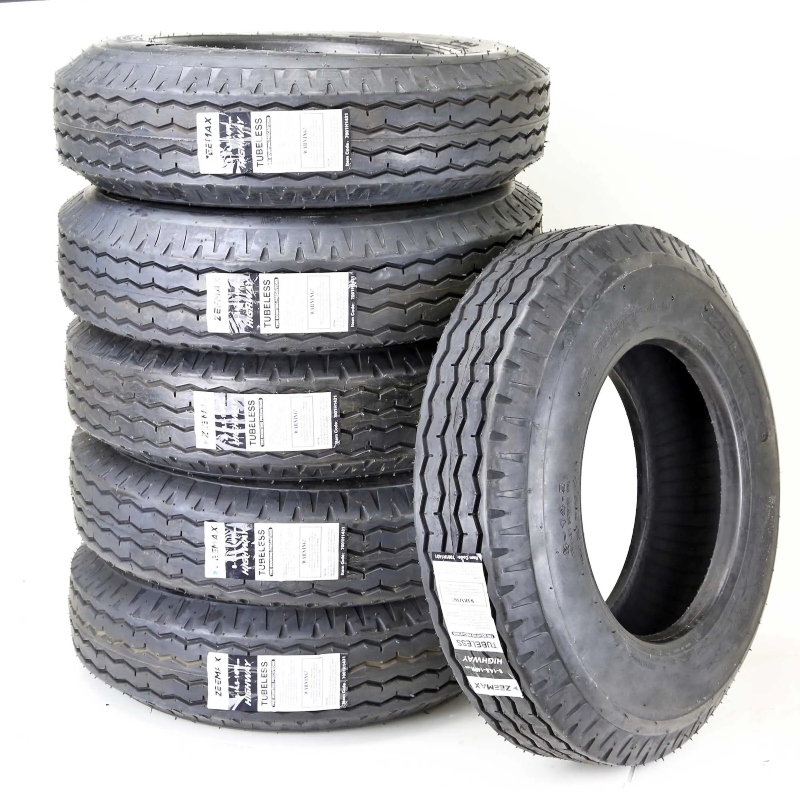
Cheap RV tires can be found through RV discount clubs such as Escapees, ToGo RV, Good Sam, and FMCA, to name a few.
Escapees
Escapees RV Club has been around for 42 years and provides a number of perks for full-time travelers. Some of which include product discounts, RV park discounts, mail service, group hangouts, advocacy, and more. Escapees is based in Livingston, Texas.
Escapees participate in the Michelin Advantage program. As a member, you can enjoy excellent discounts on Michelin, BFGoodrich, and Uniroyal RV tires. You could save enough money to pay for your Escapees membership!
Wondering if you should join Escapees? Check out our article called Escapees RV Club or Not? Our Guide to Decide.
ToGo RV
A Membership with ToGo RV provides an RV-friendly GPS service, a trip planner, more than 15,000 overnight RV parking locations, pre-made checklists, and plenty of information about RVing. Don’t forget product discounts and much more. Sign up for the free or pay yearly for Roadpass Pro.
ToGo RV’s Tire Discount Finder is a section on their app that helps you find the best discount on Michelin, BFGoodrich, Bridgestone, Firestone, and Uniroyal RV tires wherever you’re located. Discounts go as high as 45%.
Good Sam
Everyone knows Good Sam for their roadside assistance but did you know they also offer mail service, camping discounts, online trip planning, and much more.
Through Camping World, you can also receive service rates, propane, and dump station privileges at particular CW locations? They also offer free annual RV inspections.
Good Sam’s National Tire Program works in conjunction with their Roadside Assistance Service. Using your membership discount, they’ll find you the best price on top RV tire manufacturers and bring them to you, wherever you’re broken down.
The roadside assistance tech will remove the bad tire, mount the new one, and get you back on your way. You only pay for the tire and mounting at the Good Sam’s discounted rate.
FMCA (Family Motor Coach Association)
A membership with FMCA provides perks such as emergency travel assistance in case an accident leaves you stranded, mail forwarding services, roadside assistance, mobile internet plans, fuel savings, and more.
FMCA also participates in the Michelin Advantage program, so you can look forward to getting a great discount on BFGoodrich, Michelin, and Uniroyal tires at any Michelin or Continental Tire location.
Since the FMCA is primarily a motorcoach association, they recognize that many of their members tow a dinghy. Therefore, their partnership with Michelin also includes the passenger vehicle toad.
Are RV Camping Club Discounts Worth It?
These organizations require a yearly membership but discount tires are part of your perks.
Considering that RV tires for your travel trailer can run around passenger car prices and motorhomes can be from the mid-hundreds to over $1,000 (Prevosts don’t look as appealing now, do they), a discount membership could be well worth the yearly cost.
Of course, you want to save money but get a quality tire in the process that can handle the weight of your rig.
Make sure you are purchasing a radial or bias-ply ST tire from a reputable company. Reputable tire companies include:
- BFGoodrich
- Bridgestone
- Firestone
- Goodyear
- Michelin
- Road Warrior
- Uniroyal
You might hear the term “China bombs” when purchasing an RV or RV tire. According to some, these are cheaper tires made in China that manufacturers often put on new models.
Some say, even by taking care of these, they are still likely to blow out, and it has been reported that some have even blown out on the way home from the dealer. Some RVers immediately replace these with better U.S.-made tires.
Do your research when you purchase new tires and don’t just be concerned with cost. You have a lot riding on those tires.
What is the Life Expectancy of RV Tires
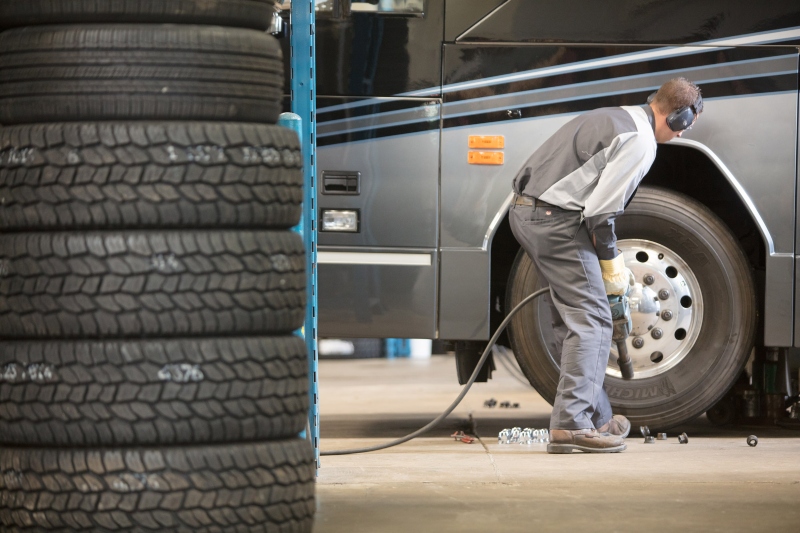
RV Tires have a life expectancy of 3-6 years with proper care. Many things can lengthen or lessen that lifespan and keep them from dry rotting.
Check your RV tires carefully every time you head out. Keeping up with maintenance will keep you on the road safely for many years to come. However, if you find damage such as cracks, bubbling, or leaks, go the safest route and replace the tire.
Keep Safety at the Forefront of Your RV Lifestyle
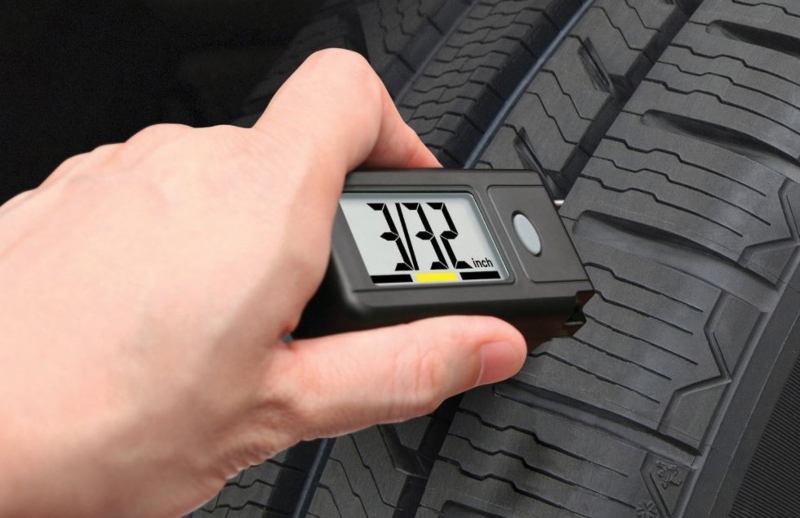
Keeping yourself, your family and your things safe is vital for the RV lifestyle. Your RV is a big investment, and blowing a tire on the road can cause everything from frustration to an emergency situation.
Planning and making sure your tires are safe from damage before you head out will keep you safe and give you peace of mind.
1. Do Travel Trailer Tires Need to Be Balanced?
2. Indoor Versus Outdoor RV Storage Facilities
3. 115 Point RV Inspection Checklist (New or Used)
4. 8 Best Ways to Avoid RV Tire Blowouts
5. Is an RV Inspection Worth the Cost?
About the Author
Terri Nighswonger – Author and Full Time RVer
Terri Nighswonger and her husband Todd have been RVing and work camping for six years with their Cavalier King Charles Spaniel, Newton, and their Minnie Australian Shepherd, Remi.
In Addition to the RVBlogger team, Terri has written for RV Life and RV Camping Magazine and is always excited to talk about her passion for RVing and her knowledge and experience in work camping.
Writing is Terri’s passion, but she also loves hiking, kayaking, walking her dogs, and anything she can do outdoors.
They originate from the Midwest but plan to enjoy the West for a few years, wintering in Arizona and summering wherever the road may lead.


